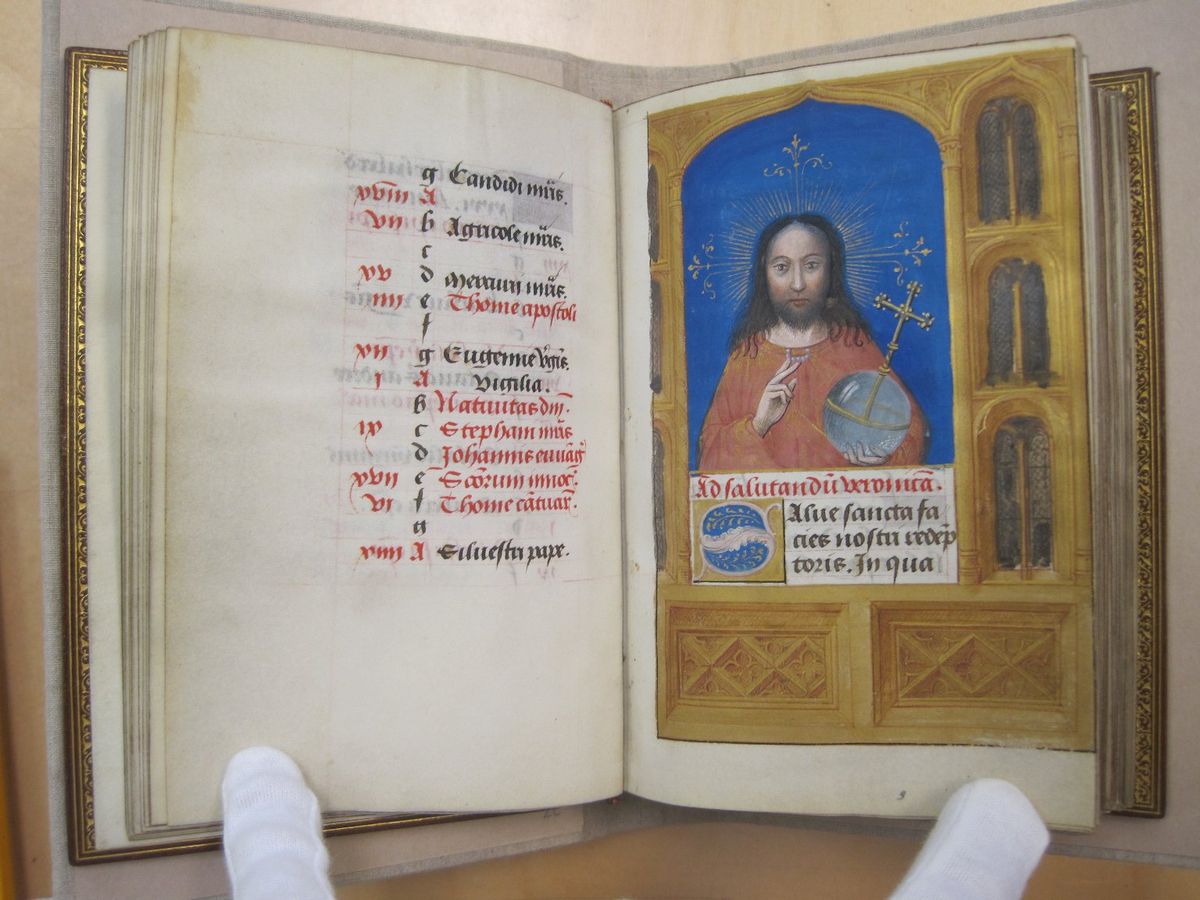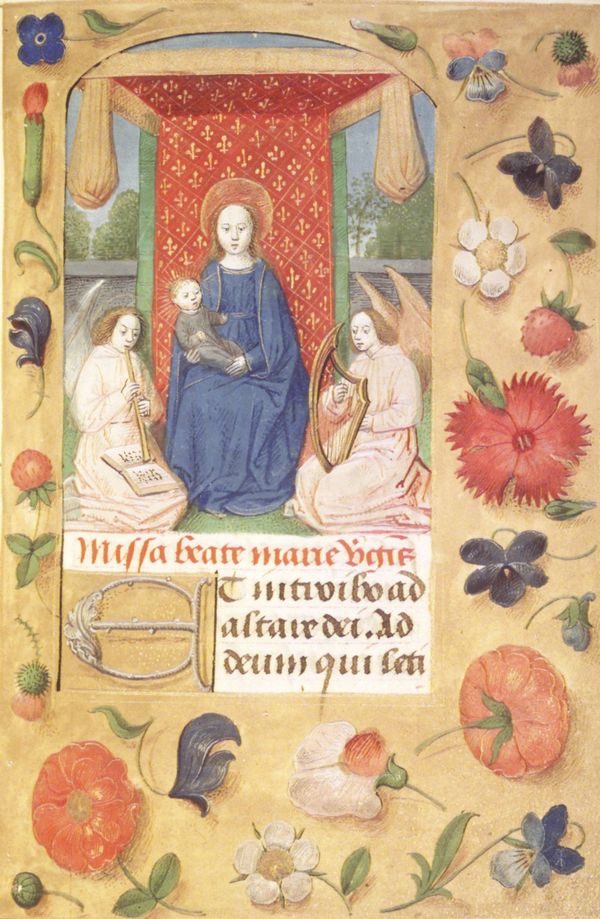About the Image:
This is a beautifully detailed page in a Book of Hours, specifically the "Horae Beatae Mariae Virginis." These books, predominantly used during the late Middle Ages into the Renaissance, were Christian devotional books primarily for laypeople. They typically contained prayers, Psalms, and Gospel lessons to be recited at specific canonical hours of the day.
Here's a detailed analysis of the spread:
Left Page:
- The Latin text is written in a beautiful Gothic script. The red letters, known as "rubrics," provided directions for prayers or indicated special sections of the text. The usage of rubrics helped the reader navigate through the manuscript and determine the appropriate prayers for specific times or events.
- The alternating red and blue initial letters at the start of lines further showcase the artistry and intricacy of the scribe's work, drawing attention to specific passages or prayers.
Right Page:
- The centerpiece of this page is a vivid illumination of Christ, depicted as Salvator Mundi ("Savior of the World"). Christ is shown with a radiant halo, symbolic of His divine nature and glory.
- He holds the orb, a representation of the Earth, topped with a cross, symbolizing His dominion over the world. This iconography underscores the Christian belief in Jesus Christ as the ruler of the universe and the savior of mankind.
- The detailed architectural setting in which Christ is depicted mirrors Gothic architectural styles of churches and cathedrals of the time. The intricate detailing of the background, from the arched windows to the richly ornamented base, gives a sense of depth and dimension to the image.
- The Latin text beneath the image likely refers to verses or prayers emphasizing Christ's role as the savior and redeemer.
The blending of text and imagery in this spread serves a dual purpose. It not only enhances the reader's spiritual experience through devotional reading but also provides a rich visual meditation on the themes presented in the text. The meticulous artistry in such Books of Hours showcases the importance of these texts in medieval Christian life, both as spiritual guides and as treasured objects of beauty and craftsmanship.








